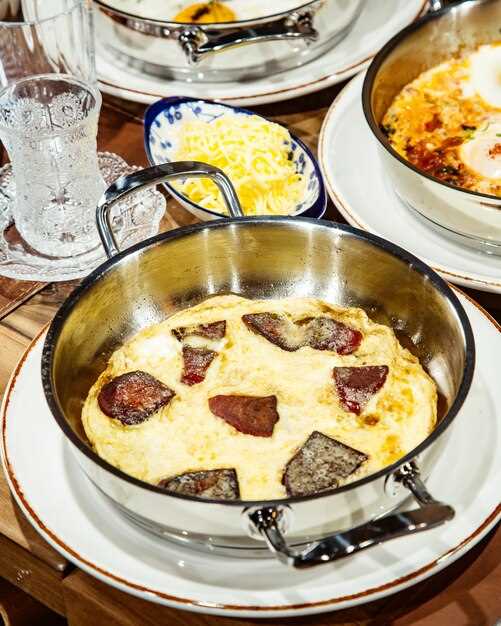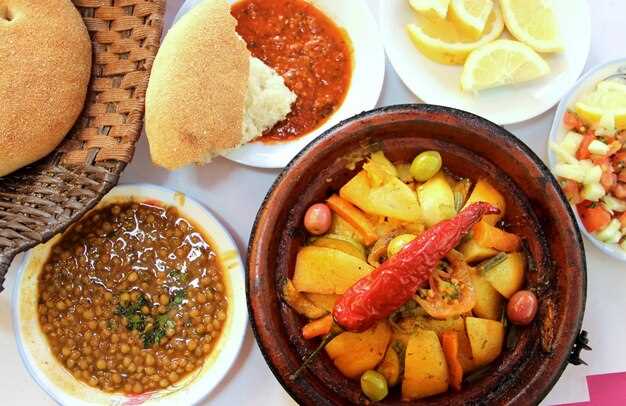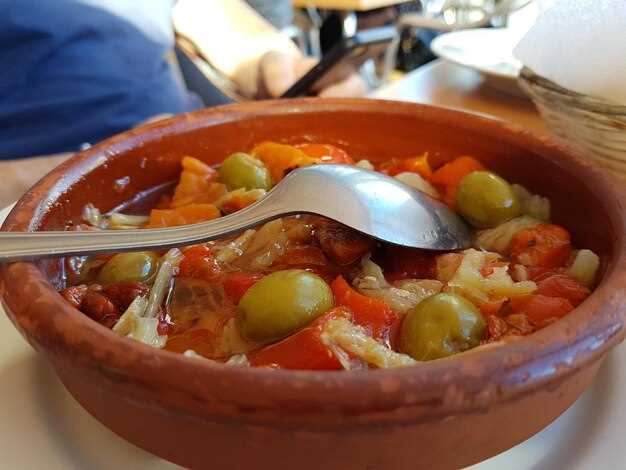
Pastel de Nata first is your starting point for Portugal’s flavors, a golden bite that signals a coast-to-hill country of sea-salt, olive oil, and time-honed technique. In this guide to 17 must-try dishes, you’ll discover beloved beloved specialties that connect market stalls, coastal ports, and quiet town kitchens without heavy theory. You need a clear map: pick a few places in a single town or along a short coastal stretch, then stay long enough to taste the variations that each producer values.
From bacalhau dishes to grilled sardines near the water, each choice invites you to taste textures and contrasts. The making of these dishes is practical: soak, boil and fry, then finish with lemon and olive oil. In writing this list, we focus on not just iconic recipes but the moments you share at the corner bar, the slow simmer of a family kitchen, and the fine-dining plates that still feel of the street. Mostly, these dishes are accessible to travelers who want clarity and memorable flavor, with france influences lingering in a few coastal twists.
To bring these tastes alive, observe technique: boil cod before shredding, roasted garlic and onion layers deepen the broth, and a light spread of olive oil over warm bread helps you savor every drop. The aroma travels across a town square, from the market stall to the dining table, turning a simple meal into a shared moment.
In inland towns, caldo verde brings leafy greens, potatoes, and chouriço to a comforting bowl. In the Algarve, roasted pork and seafood stews define the iberian coast; the aroma from a grill drifts through narrow corner lanes. Dishes built on swine show respect for farmers and coastlines alike, while the beloved classics keep their place beside bold experiments.
Whether you chase the classics or savor modern interpretations in fine-dining rooms, the 17 dishes connect coastline, hills, and villages. You will stand at the corner of a street market with a plate in hand, noticing golden crusts, smoky aromas, and the way water and wind carry flavors across a plate. This guide invites you to taste, writing notes, and build your own memory of beloved Portuguese food. Need to plan before you go, making sure you try a little of everything in a single town, and you’ll leave with a map of flavors rather than a single memory.
Portuguese Food Insights
Recommendation: Start with a seafood-studded cataplana at a local tasca to taste the heart of Portuguese cuisine, then compare with tender suckling swine cuts later in the meal.
Those centuries of coastal trade shaped pantry staples–garlic, olive oil, salt cod, and spices–that define regional flavors and cooking techniques across the country.
Serve flat bread alongside, with plates of olive-oil-drenched slices and strips of grilled fish or smoked products to offer contrast and texture in every bite.
From the douro valley, chefs pair seafood-studded stews with crisp white wines or rounded reds; in gourmet restaurants, tasting menus reveal layered flavors across courses that reflect both tradition and innovation.
People plan soirees that showcase simple, vibrant dishes alongside richer ones; the goal is balance, comfort, and a sense of place in every shared plate.
Core ingredients and flavor profile of Carne de Porco à Portuguesa
Choose pork shoulder with a balanced fat cap for depth; sear pieces until golden, that crust locks in flavor before a gentle simmer with water and white wine. Since homeland traditions lean on simple pantry staples, this dish builds a rich, irresistible sauce from a few honest ingredients.
- Pork shoulder or neck with a good fat margin
- Garlic and olive oil
- Onion
- White wine (dry)
- Water or light stock
- Paprika (sweet or a touch of smoked)
- Bay leaves and black pepper
- Tomato paste or crushed tomatoes (optional)
- Orange zest or a splash of orange juice
- Parsley or cilantro for finish
- Salt to taste
The flavor profile blends garlicky warmth with paprika’s depth and a bright citrus lift. The fat renders into a glossy sauce, coating the pork with a golden sheen that clings to potatoes or bread. A measured amount of wine adds acidity and body, making the dish right for modern tables while honoring the homeland heritage of Portugal. A few spots of orange zest on top brighten the plate and remind diners of summer markets and sunlit shores. Some cooks introduce a spicy hint to balance the richness, creating a spicy yet balanced bite that stays approachable and gourmet.
- Texture: tender, with a light crust from searing and a saucy, clingy finish
- Flavors: garlicky and savory base, paprika-driven warmth, citrusy lift from orange
- Color: golden pork backed by a lacquered sauce
- Balance: fat, salt, and acidity mingle to prevent heaviness, making the dish feel cohesive
- Aromatics: bay leaf and parsley contribute a clean, herbal finish
- Serve with boiled potatoes or crusty country bread to soak up every drop
- Pair with a glass of right wine; white wines from Portugal, such as Vinho Verde, or light Douro whites, suit the profile
- In coastal regions, you may encounter innovative twists that add prawns as a variation, though that shifts toward a different dish than Carne de Porco à Portuguesa
- For a summer table, keep the dish lighter with a crisp salad and a refreshing beverage
For visual reference, Shutterstock shots of the dish show the glossy, golden meat and steaming sauce. A small trick to elevate the presentation is a final garnish of fresh herbs and a thin orange twist, which makes the plate look gourmet and inviting. Luzia, a Lisbon home cook, notes that a gentle simmer and careful tasting at the right moment deliver an irresistible balance that many spots in Portugal try to replicate at home. Since this is a staple of the homeland, serving it in a communal style aligns with Portuguese conviviality and invites your guests to savor the country in every bite.
Traditional preparation steps for authentic results

Begin with locals’ staples: bacalhau, potatoes, garlic, olive oil, lemon, and butter. Make it a staple at home. Rinse and soak the salt cod until it firms and loses excess salt, before you season. Create the essence of the dish by preserving the fish’s delicate spine while finishing with a bright lemon note and a touch of french butter for richness. Keep the finish rich with a steady drizzle of olive oil and a light touch of salt.
Heat olive oil in a wide pan until shimmering, then sauté garlic until aromatic. Layer sliced potatoes, bacalhau, and onion, adding a splash of water and simmering until the flavors mingle and the potatoes cocoon the fish. Use a paella-style wide pan to spread heat evenly. Finish with lemon zest and juice, cook until the edges turn glossy, then check for salt and adjust.
For a crunchy crust, sprinkle a light mix of breadcrumbs and chopped parsley, then bake until blistered and golden. If you want a crisper top, finish under a hot grill for a minute or two. This baked finish creates texture that locals expect in traditional plates.
Arrange a simple salada of greens with olive oil and lemon as a fresh partner to balance fat. Serve with dessert options on the side, such as small cakes brushed with butter and citrus. To cap the evening, offer a glass from a nearby cervejaria and a shot of ginja for a traditional pairing that invites drinking and storytelling.
City plates deserve a confident finish: plate while hot, then invite guests to share adventure that prompts conversation alongside a light salada or a citrusy dessert, and always taste as you go. You can simply adjust seasoning if needed. The process doesnt rely on heavy sauces; it relies on balanced seasoning, time, and attention to the fish until the surface glistens.
Where to taste in Lisbon, Porto, and lesser-known towns

Begin in Alfama, Lisbon: In a narrow side street, a tiny tasca serves incredibly tender sardines and bacalhau stews. Henrique, a local host, greets you with a warm personal touch and guides you through a short sequence of plates: crusty bread, bay leaves in the simmering stews, and a delicious, clear glass of local liquor to finish. Outside, the city hums; inside, dozens of small plates reveal the daily rhythm of home cooking. A paid tasting option is common here, with four to six courses that let you compare what each spot does best and miss nothing.
Porto: Head to Mercado do Bolhão and the Ribeira for a vivid snapshot of how meats, cheeses, and rustic pastries come together. Youll sample bites from several stalls, then pick a Porto classic like francesinha at a traditional cafe or a lighter sandwich with crusty bread. Finish with a pastel or queijo and a small glass of aged port or green wine. For seafood fans, nearby riverside tavernas offer grilled cod or octopus that show how simple ingredients become incredibly flavorful, sometimes with a French technique or a French-inspired sauce subtly delivering depth.
Lesser-known towns: In Estremoz, Monsaraz, and the surrounding villages, families run paid tastings that spotlight olive oil, cheese aged on bay leaves, and slow-stewed meats. Youll find clay pots delivering tender stews, and youll hear how the breed of pork or goat informs the sauce. Dozens of small producers share stories behind each recipe. The pastry case nearby offers treats like almond-filled pastries and pastel de nata to round out the experience. Theyve built intimate spaces where the focus stays on regional character rather than hype.
Outside the capitals, keep an eye on markets that run every weekend in towns along the Alentejo coast or inland: a half-day tasting can blend bread with olive oil, rustic sausage, and a local liquor that lingers on the palate. The magic is in the personal touches–hosts who explain ingredients, show you how to crack a shell of olives, and answer what makes their region unique.
Best sides and regional pairings to complete the dish
Start with batatas a murro and a bright lemon-garlic aioli as the front line of any fish or seafood plate. These crispy, warm pieces give a good texture contrast and lets the sauce shine, turning a simple plate into a celebration.
These regional pairings begin at the coast and move inland: in Bairrada, cured chouriço (pitéu-sized bites) with crusty bread adds smoky depth that complements bacalhau or mussels; Lisbon and Estremadura keep greens tossed with olive oil handy to refresh the palate; in the north, roasted peppers and mixed herbs carry the grilled fish without overpowering it.
Chef tasted a wide range of combinations, theres a clear result: these sides lift every main, from seafood stews to grilled catches, creating a happy gastronomic moment that guests remember. Lets build on these pairings with几 focused surface notes that help you plan for the table.
| Dish / Occasion | Regional pairing | Why it works |
|---|---|---|
| Grilled sardines (sardinhas assadas) | Batatas a murro, greens, lemon; white from Bairrada | Crisp potato crust adds texture; acidity and minerality balance fish fat. |
| Bacalhau dishes | Arroz de tomate or batatas cozidas; garlic-sautéed greens | Carries saltiness and softens richness; herbs brighten the plate. |
| Amêijoas (mussels) or cataplana | Rustic pão, light aioli, cucumber salad | Soaks up broth and brightens with bread texture and tangy dip. |
| Arroz de marisco (paella-style seafood rice) | Fresh greens and crusty pão; slices of cured chouriço | Hearty dish gains sparkle from bread and a touch of smoky savor. |
Trust these options to finish the dish with a regional identity and a smile on the table, making every bite feel like a piece of Portugal’s gastronomic celebration.
Practical tasting tips: budget, timing, and restaurant choices
Set a budget target of €25-€35 per person for a satisfying meal, including 2-3 tastings and a drink. Choose places offering a three-dish lineup to sample different flavors, with emphasis on fish, marisco, and chouriço.
Time your visit to leverage fresher preparations and avoid crowds: lunch around 12:30-1:30 or early dinner around 6:30-7:00 works well, especially near markets or events showcasing regional seafood.
Choose a district known for culture and street-food energy, away from tourist hubs. Independent taverns offer pillow-soft bread, chunky stews, and cured meats; you’ll enjoy a more authentic, popular experience.
Build a smart order: start with small plates of fish and marisco, then mix in chouriço or cured meats, and finish with a flaming dessert or a bold cheese. Shared plates stretch the budget and reveal a wider range of wonders.
Drinks: choose fizzy mineral water or a light, international white; pair with seafood for balance; consider a milk-based coffee or a mild pudding to end.
brazil-inspired notes appear on several menus, alongside homeland favorites, creating a cultural blend that keeps offerings lively and popular.
